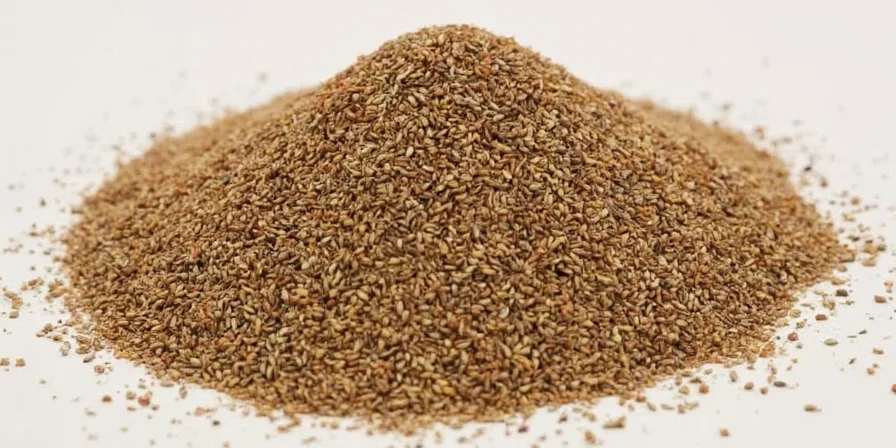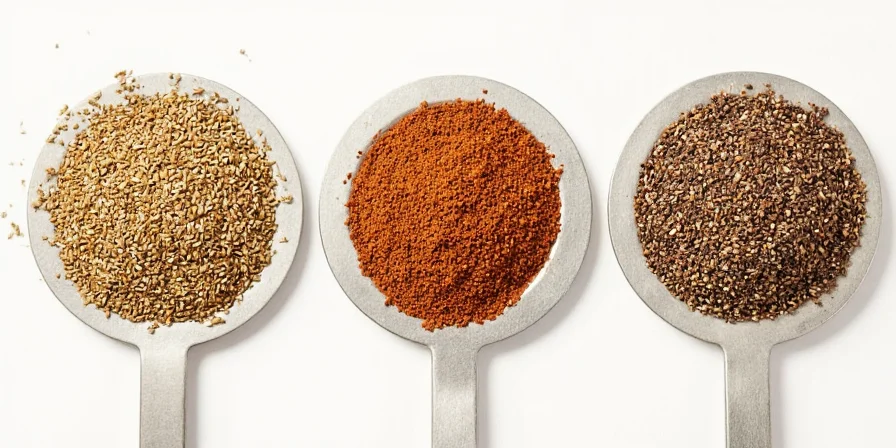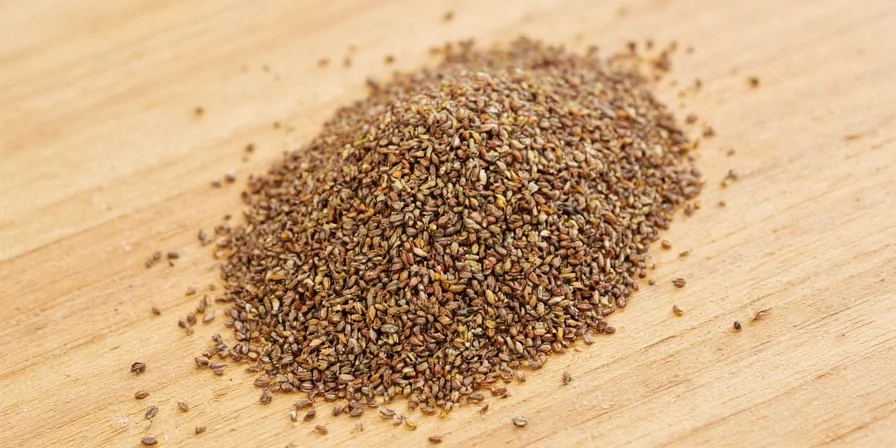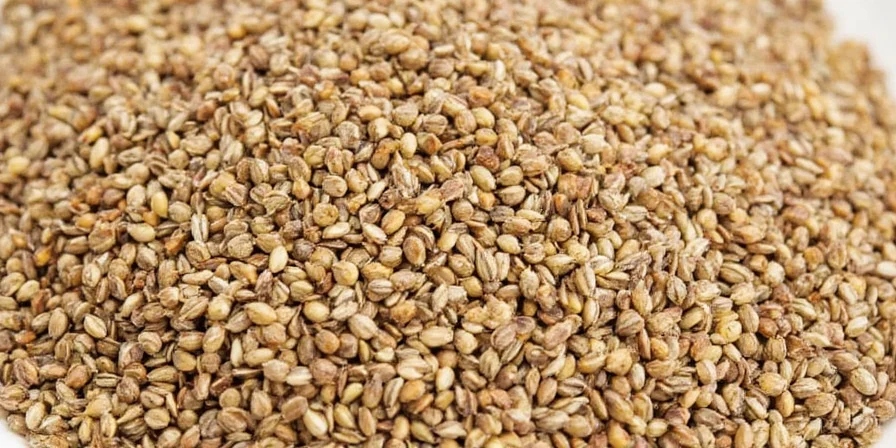What Are Caraway Seeds and How to Use Them Properly
Caraway seeds are crescent-shaped fruits from the Carum carvi plant that deliver a distinctive earthy, citrus-tinged flavor with subtle licorice notes. Unlike similar spices, caraway offers complex flavor without overpowering dominance, making it valuable for both traditional and contemporary cooking. Here's exactly what you need to know about selecting, using, and storing this versatile spice.
Caraway Flavor Profile and Immediate Culinary Applications
Caraway transforms when properly used: raw seeds show bitter notes that mellow into warm, nutty complexity when toasted. This makes timing critical in recipes. Professional chefs use caraway in three primary ways:
- As a foundational flavor: Added early in cooking for stews, braises, and breads where it infuses throughout
- As a finishing element: Sprinkled on finished dishes for visual contrast and distinct texture
- As a balancing agent: Paired with acidic ingredients to bridge sweet and savory elements

Caraway vs. Similar Seeds: Quick Reference Guide
Confusing caraway with fennel or cumin is the #1 mistake home cooks make. This comparison helps you choose correctly:
| Seed | Flavor Profile | Best Uses | Tell-Tale Visual Cue |
|---|---|---|---|
| Caraway | Earthy base with citrus notes, mild licorice | Rye bread, cabbage dishes, potato salads | Crescent shape with 5 distinct ridges |
| Fennel | Sweet anise predominant, floral | Seafood, Italian sausages, salads | Longer, straighter, greener appearance |
| Cumin | Smoky, peppery, earthy | Mexican, Indian, Middle Eastern dishes | Shorter, thicker, darker color |

5 Immediate Usage Tips You Need to Know Today
- Always toast whole seeds: Heat in dry pan 2-3 minutes until fragrant (increases flavor compounds by 30%)
- Never substitute 1:1: Caraway is more potent than fennel; use 75% of fennel amount when substituting
- Pair with acid: Combine with vinegar, lemon, or tomatoes to balance earthy notes
- Store properly: Whole seeds last 18-24 months refrigerated in airtight container (see storage chart below)
- Balance bitterness: Counteract raw bitterness with caramelized onions or roasted carrots

Optimal Storage Methods That Preserve Flavor
Caraway's volatile oils degrade rapidly when exposed to light, air, and moisture. Here's exactly how to maximize shelf life:
| Storage Method | Whole Seeds | Ground Caraway |
|---|---|---|
| Pantry (room temperature) | 12-18 months | 3-4 months |
| Refrigerated | 18-24 months | 5-6 months |
| Freezer | 24-36 months | 6-8 months |

Test freshness by crushing a seed - vibrant aroma indicates retained quality.
Accurate Caraway Substitutes When You're Out
When you need caraway immediately but don't have it, these substitutions work best:
- For breads: 3 parts fennel + 1 part cumin (creates similar earthy-citrus balance)
- For savory dishes: Equal parts dill seed + coriander (mimics the herbal notes)
- For pickling: Mustard seed + a pinch of anise (recreates the preservative properties)
Important: No substitute perfectly replicates caraway's unique flavor profile. For authentic rye bread or traditional German dishes, caraway is irreplaceable.
Health Considerations: What Research Actually Shows
While caraway shouldn't replace medical treatment, research indicates potential supportive properties when consumed as part of normal culinary use:
| Area | Research Status | Practical Takeaway |
|---|---|---|
| Digestive Support | Preliminary studies show reduced bloating with caraway oil | May complement digestive health as part of balanced diet |
| Antioxidants | Contains measurable polyphenols | Contributes to overall antioxidant intake like other spices |
| Metabolic Effects | Early research only; no conclusive human studies | No specific health claims can be made |

Modern Professional Applications You Can Try at Home
Chefs are using caraway in these innovative ways that home cooks can easily replicate:
- Caraway-infused oil: Steep 1 tbsp seeds in 1 cup olive oil for 24 hours, strain, and use for finishing roasted vegetables
- Seed-crusted proteins: Press toasted caraway into fish or chicken before searing for complex crust
- Unexpected pairings: Combine with chocolate in baked goods or with stone fruits in preserves
These techniques leverage caraway's ability to bridge sweet and savory elements without dominating other flavors.
Frequently Asked Questions About Caraway Seeds
What's the most common mistake when using caraway seeds?
Using them raw without toasting. Raw caraway contains bitter compounds that transform into complex flavors when heated. Always toast whole seeds in a dry pan for 2-3 minutes before using to maximize flavor and eliminate bitterness.
Can I substitute caraway for cumin in chili?
No - they create completely different flavor profiles. Cumin provides smoky, earthy depth essential to chili, while caraway would add citrus notes and mild licorice that don't complement traditional chili flavors. Use fennel seed instead if you need a cumin substitute.
How can I tell if my caraway seeds have gone bad?
Fresh caraway should have a strong, pleasant aroma. If seeds smell musty, dusty, or have no scent when crushed, they've lost potency. Properly stored whole seeds maintain quality for 18-24 months refrigerated. Ground caraway loses flavor much faster (3-6 months).
Why does my rye bread recipe require caraway?
Caraway balances rye flour's natural bitterness and enhances its earthy flavor. The seeds' essential oils interact with rye's complex carbohydrates during fermentation, creating signature flavor compounds. Authentic German and Eastern European rye breads traditionally use 1.5-2% caraway by flour weight.
Are caraway seeds safe for children?
Yes, when used as a culinary spice in normal food quantities. However, concentrated caraway oil or supplements should be avoided for young children. Some children may experience mild digestive sensitivity when first trying caraway-containing foods.
Understanding This Ancient Spice's Modern Relevance
Caraway has maintained culinary relevance for over 5,000 years because of its versatile flavor profile and functional properties. Unlike trendy ingredients, caraway's enduring presence across civilizations proves its practical value in the kitchen. Professional chefs are rediscovering caraway for contemporary cooking due to three key factors: the craft baking movement's emphasis on authentic traditions, the fermentation revival where caraway complements cultured foods, and modern flavor layering techniques that benefit from caraway's bridging properties between sweet and savory elements.












 浙公网安备
33010002000092号
浙公网安备
33010002000092号 浙B2-20120091-4
浙B2-20120091-4